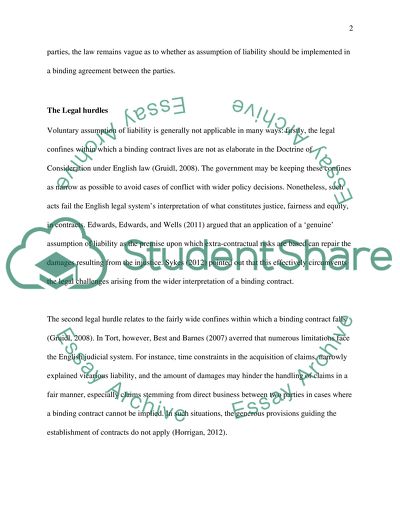Cite this document
(“Voluntary assumption of liability Essay Example | Topics and Well Written Essays - 2500 words”, n.d.)
Retrieved from https://studentshare.org/law/1474016-the-voluntary-assumption-of-responsibility-test-is
Retrieved from https://studentshare.org/law/1474016-the-voluntary-assumption-of-responsibility-test-is
(Voluntary Assumption of Liability Essay Example | Topics and Well Written Essays - 2500 Words)
https://studentshare.org/law/1474016-the-voluntary-assumption-of-responsibility-test-is.
https://studentshare.org/law/1474016-the-voluntary-assumption-of-responsibility-test-is.
“Voluntary Assumption of Liability Essay Example | Topics and Well Written Essays - 2500 Words”, n.d. https://studentshare.org/law/1474016-the-voluntary-assumption-of-responsibility-test-is.


